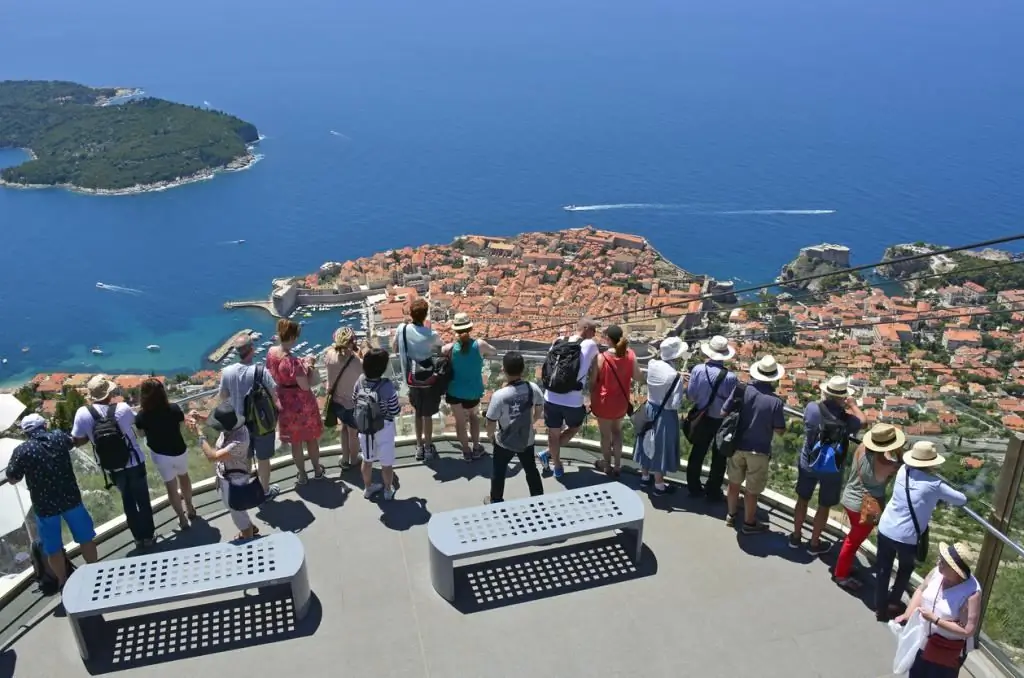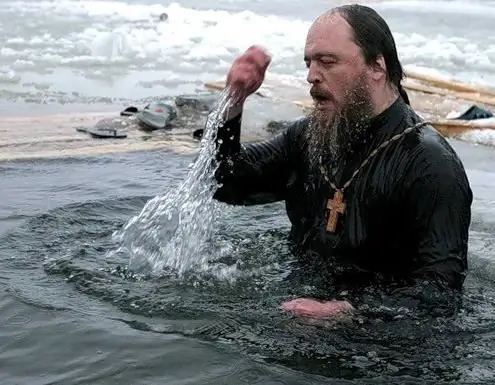- Author Harold Hamphrey [email protected].
- Public 2023-12-17 10:06.
- Last modified 2025-01-24 11:10.
Recently, tours to Japan are becoming more and more popular. This country with a long history attracts the attention of tourists from all over the world. However, Japan's hot springs are of particular interest today.
Description
Japan's hot springs are a popular holiday destination for locals and visitors alike. As you know, this island nation has a high level of volcanic and seismic activity. This, in turn, gives rise to the creation of various faults in the soil and the formation of improvised reservoirs in them.
Some of them have thermal water, which attracted animals first, and then humans. Interesting fact: in Japan, monkeys in hot springs like to spend quite a lot of time, especially in winter.

In a country known for its cool climate, especially in mountainous areas, hot springs are of particular importance and value not only as centers of heat, but also as complexes of wellness procedures. Small settlements immediately began to form around them, or people began to live as best they could.closer to them. Thermal springs in Japan have developed a special relationship, and a whole culture of their use has emerged.
Onsens
Currently, there are more than 2,000 springs in Japan that are used for bathing. Onsens in Japan, also called onsen, have long been used for heating and he alth bathing. In springs, water is saturated with hydrogen sulfide, iron, saline solutions and carbonated with carbon dioxide.

They are divided into two types: open, when hot water is used in the same reservoir in which it was formed, and closed. In the latter version, thermal water is supplied to special covered rooms, to baths, which are called "ofuro". The main difference between onsens and ordinary Japanese baths - sento (sento) - is that in the first one only thermal mineral water is used. In ordinary baths, plain water is heated using boilers.
Today, a whole infrastructure is being formed around such sources, ranging from changing places, hotels to entire specialized centers, where a wide range of medical and preventive and other services are provided.

Device
As mentioned earlier, the volcanic nature of the Japanese islands influenced the formation of thermal springs. Traditionally, onsens are especially revered in the Land of the Rising Sun, and not only because the Japanese honor their history, but also because of their he alth care. Initially, women andmen bathed in different thermal springs, today you can also find mixed baths. However, it should be noted that the most common practice is that men and women visit the springs at different times. Small children can enter the baths without any restrictions.
It is now quite common among the Japanese to invite friends, families to spend time together or even honeymoon in these places.
Visit Rules
In Japan, hot springs have their own rules and culture of visiting. Before immersing yourself in the source, you must thoroughly wash your entire body with soap and then take a shower. Special washing places or showers are located in the immediate vicinity of the onsens.
After all the required hygiene procedures, you can go to the source. Regulations state that a special towel must be used during immersion to cover nudity, at least when entering and exiting the water.
Traditionally, the hot springs of Japan are considered a place for a quiet, relaxing holiday and enjoying the surrounding nature. However, in modern onsens (largely designed for tourists), noisy companies can be found.
Takaragawa onsen
This is a traditional classic hot spring. It is located in Gunma Prefecture, in the small village of Minakami. Takaragawa is translated from Japanese as "river of treasures". This is one of the most famous and largest hot springs, which are located under the opensky.

Tours to Japan offer a visit to this onsen, as well as booking a hotel in the immediate vicinity. In total there are four thermal pools. Three are for general use and one is for women only.
The water in the springs is mineral, containing various substances that are healing for the body. This place has long been popular and known throughout Japan, as the waters of Takaragawa onsen help with diseases such as:
- circulatory disorders;
- problems with the gastrointestinal tract;
- disorders of the nervous system;
- skin problems;
- stretching muscles and ligaments.

Besides treatment and preventive measures, this complex offers other services. In the summer, you can go kayaking, rafting and even paragliding (flying on a special controlled parachute). In winter, you can go skiing and snowboarding.
Onsens in the capital
Hot springs in Tokyo are located on the island of Odaiba. This man-made artificial island is located in Tokyo Bay. Onsen Monogatari, built here, is one of the most popular places not only among the Japanese, but also among numerous tourists. After a high-tech modern metropolis, many are happy to immerse themselves in the history of the old traditional city. It turns out quite easily, because the interiors of this onsenmade in the old Japanese style.

The attitude towards visitors here is at the highest level, already from the very entrance everyone here is given serious attention. Clients are invited to dress in antique-style kimonos and proceed to the baths through the halls, the interiors of which are designed in the style of the 16th-18th centuries.
Onsen services
In addition to the thermal springs themselves, which originate at a depth of about 1,800 meters, a theme park has been created here that can take visitors to old Japan. It offers various types of onsen, both outdoors and indoors. In total, visitors will be offered 14 types of baths. In this institution, the list of services is so diverse that it is simply impossible to use them in one day.

In the Monogatari onsen, you can bathe in thermal springs, the water for which is supplied to a variety of baths made from different types of wood or types of stone. It is believed that, for example, a bath made from cypress wood has a beneficial effect on the respiratory system, and from cedar it copes well with skin problems.
It also offers other wellness services, such as massage or aromatherapy. There are several cafes and restaurants on the territory of this complex. If you wish, you can visit the thematic museum, where you can not only get acquainted with the history of Tokyo, but also feel like a resident of the 18th century era. Numerous animators and specially prepared programs will help with this.for guests.
Infrastructure
Onsen Oedo Monogatari is very popular with tourists and locals, not only due to the wide range of services provided, but also because of its good location. After visiting the thermal springs themselves, you can head to the coastal park located near Tokyo Bay.
If you wish, you can stay in one of the nearest comfortable hotels. Many Japanese people make frequent trips to this onsen when planning their vacations, as it successfully combines traditions held in high esteem in this country with modern trends and advanced Tokyo technology.
In this place, two eras seem to unite - old and new Japan. It should be noted that tours to Japan and Tokyo are very popular, including due to thermal springs that have healing properties. Travelers coming here have the opportunity not only to get acquainted with a country with a huge history, but also to improve their he alth.






